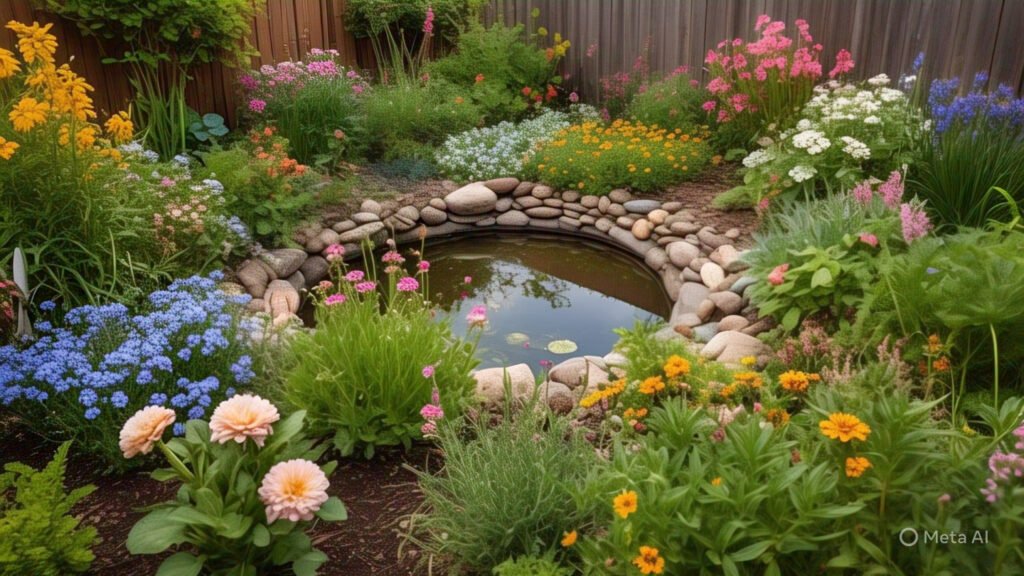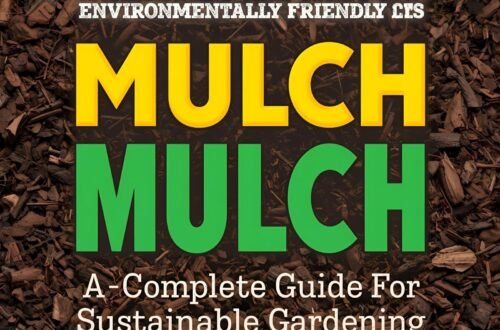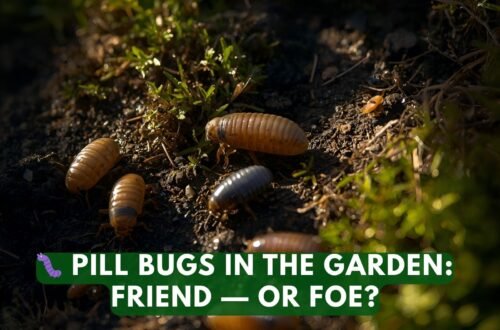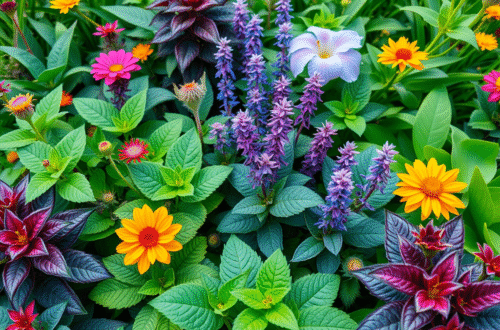What Flowers Are Good for Eco-Friendly Gardens?
In this guide, you’ll learn exactly what flowers are best for eco-friendly gardens, how to select them, and tips for maintaining a low-impact floral paradise.
Want to grow a beautiful garden without harming the planet? Many gardeners are now shifting their focus from aesthetics alone to creating eco-friendly landscapes that support pollinators, conserve water, and enrich local ecosystems. In this guide, you’ll learn exactly what flowers are best for eco-friendly gardens, how to select them, and tips for maintaining a low-impact floral paradise.
What Makes a Garden Eco-Friendly?
Defining Eco-Friendly Gardening
An eco-friendly garden prioritizes sustainability, biodiversity, and minimal environmental impact. It uses fewer synthetic inputs and fosters natural systems.
Key Elements of Eco-Gardens
- Native and drought-resistant plants
- Organic practices (no chemical fertilizers or pesticides)
- Pollinator support (bees, butterflies, etc.)
- Composting and mulching
- Efficient water use
“Gardening sustainably isn’t just about plants—it’s about healing the land and working with nature.” — Leah Brooks, Urban Botanist

Why Choose Eco-Friendly Flowers?
Environmental Benefits
- Support pollinators like bees, hummingbirds, and butterflies
- Improve soil health with deep roots and ground cover
- Reduce carbon footprint by avoiding non-native imports
Long-Term Rewards
- Lower maintenance over time
- Reduced water and chemical use
- Greater ecosystem resilience
Top Flowers for Eco-Friendly Gardens
Native Perennials
| Flower | Benefits | Region |
|---|---|---|
| Purple Coneflower (Echinacea) | Pollinator magnet, drought-tolerant | Nationwide |
| Black-Eyed Susan (Rudbeckia) | Easy-care, attracts butterflies | Most of U.S. |
| Bee Balm (Monarda) | Supports hummingbirds and bees | Eastern & Central U.S. |
| California Poppy | No irrigation needed once established | Western U.S. |
Wildflowers
- Milkweed (Asclepias spp.) – Monarch butterfly host plant
- Coreopsis – Long bloom time, minimal water needs
- Lupine – Nitrogen fixer, great for soil
Herbs With Eco Value
- Lavender – Repels pests and attracts pollinators
- Thyme – Groundcover and edible
- Borage – Edible flowers, attracts bees
Tip: Always choose locally adapted cultivars for maximum resilience.
Choosing Native Flowers by Region
Eastern United States
- Purple coneflower
- Joe-Pye weed
- Wild columbine
Midwest
- Prairie blazing star
- Butterfly weed
- Wild bergamot
Western States
- Yarrow
- Blanket flower (Gaillardia)
- Desert marigold
Southern U.S.
- Coreopsis
- Texas bluebonnet
- Coral honeysuckle
Pollinator-Friendly Flowering Plants
Why Pollinators Matter
Pollinators are essential to plant reproduction and food production. Without them, gardens and ecosystems would struggle to survive.
Best Flowers for Pollinators
- Zinnias: Loved by butterflies
- Sunflowers: Excellent nectar and seed source
- Asters: Late-season bloomers
“If you plant for pollinators, you plant for life.” — Doug Tallamy, Author of Bringing Nature Home
Low-Water, Drought-Resistant Blooms
Top Choices
| Flower | Water Use | Ideal Zones |
|---|---|---|
| Blanket Flower | Very low | 3–10 |
| Penstemon | Low | 4–9 |
| Yarrow | Extremely low | 3–9 |
Mulch + Native = Win
Combine mulching with native species for the most water-efficient flower garden.
Attracting Beneficial Insects
Flowering Plants That Help
- Sweet alyssum – Attracts hoverflies
- Fennel – Attracts ladybugs and parasitic wasps
- Cosmos – Offers pollen and nectar all summer
Integrated Pest Management (IPM)
By inviting beneficial insects, your flowers help naturally control pests like aphids, whiteflies, and mites.
Companion Planting With Flowers
Best Pairings
| Flower | Companion | Benefit |
|---|---|---|
| Marigolds | Tomatoes, cucumbers | Pest deterrent |
| Nasturtium | Broccoli, kale | Trap crop for aphids |
| Calendula | Carrots, lettuce | Attracts pollinators |
Tip: Mix flowers into your veggie beds to create a vibrant and productive landscape.
Eco-Friendly Flower Bed Design
Tips for Sustainable Layouts
- Group by water and sunlight needs
- Use raised beds with compost-rich soil
- Include layered plant heights for biodiversity
Example Layout
| Zone | Plant Type | Examples |
|---|---|---|
| Back row | Tall perennials | Joe-Pye Weed, Sunflowers |
| Middle | Mid-height bloomers | Coneflowers, Bee Balm |
| Front | Low-growing herbs | Thyme, Lavender |
Organic Maintenance for Flower Gardens
Natural Fertilizers
- Compost
- Worm castings
- Fish emulsion
Pest Control Without Chemicals
- Neem oil
- Diatomaceous earth
- Handpicking pests
“Healthy soil is the foundation of any eco-friendly garden.” — Soil Science Society of America
Key Takeaways
- Choose native, low-water flowers to reduce environmental impact
- Plant with pollinators and beneficial insects in mind
- Maintain organically with natural compost and pest control methods
- Design gardens to maximize biodiversity and water efficiency
FAQs: What Flowers Are Good for Eco-Friendly Gardens?
What is the easiest eco-friendly flower to grow?
Black-eyed Susans and zinnias are both easy and beneficial.
Are annuals or perennials better for eco-gardens?
Perennials are typically better because they return yearly and require less input.
Can I use non-native flowers?
Use sparingly. Choose non-invasive species that support pollinators.
How do I avoid using pesticides?
Grow companion flowers, use neem oil, and encourage beneficial insects.
What flower colors attract pollinators?
Bright colors like blue, purple, yellow, and orange attract bees and butterflies.
Conclusion: Beautify and Protect With Eco-Friendly Flowers
When you choose the right flowers for your eco-friendly garden, you create a space that does more than just look pretty—you support pollinators, conserve water, enrich soil, and restore balance to your environment. From native wildflowers to pollinator-friendly blooms, the choices are as diverse as the rewards.
Start small, think local, and let your garden be a thriving piece of the planet’s healing.
For more guides on sustainable gardening, visit our Eco Gardening Blog or try the EcoAI Gardener chatbot to get personalized plant advice.
Discover more from Ecorganicas
Subscribe to get the latest posts sent to your email.



